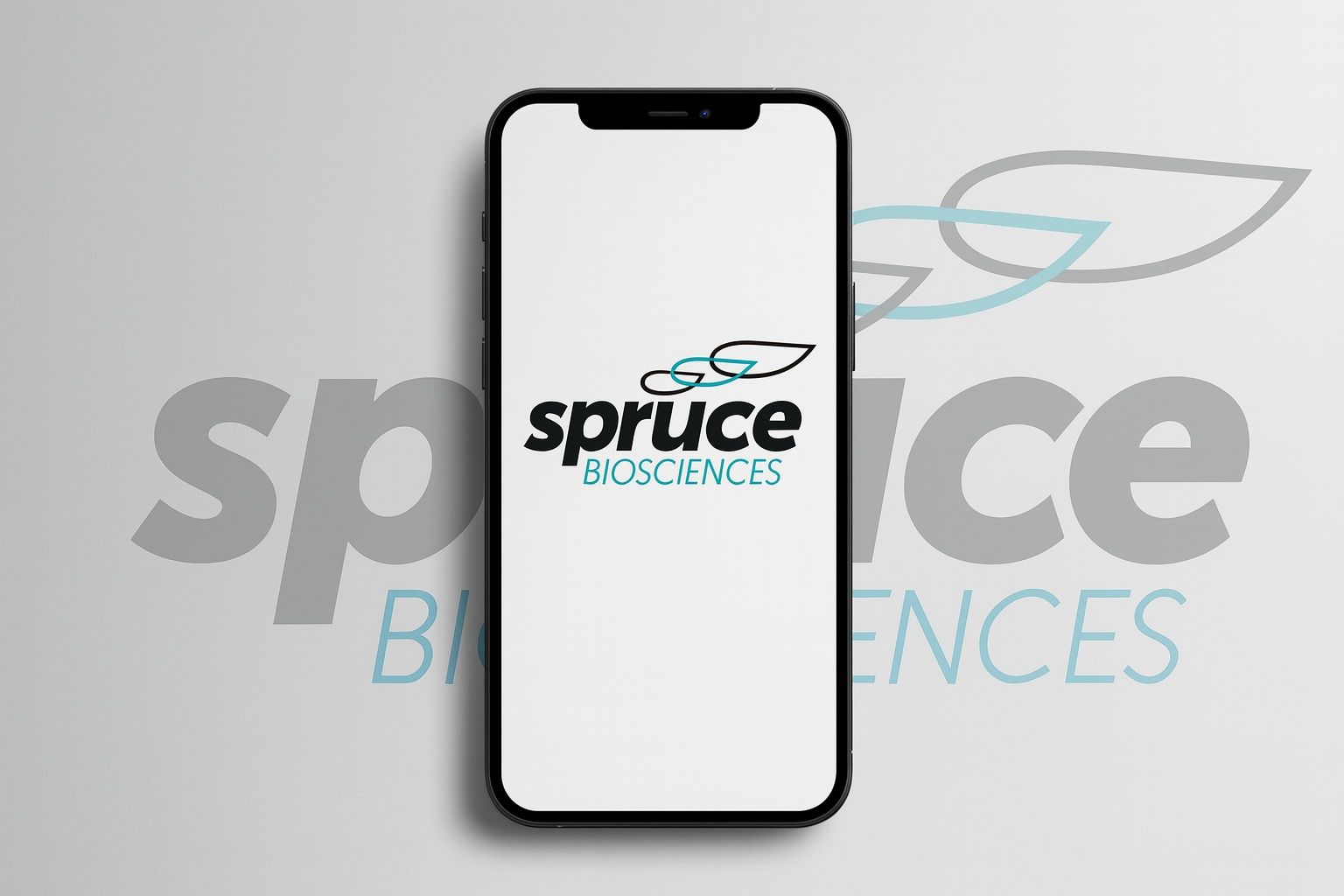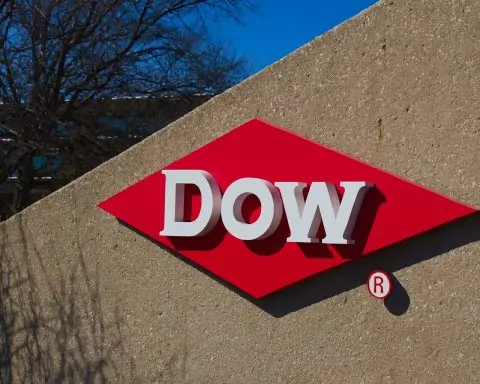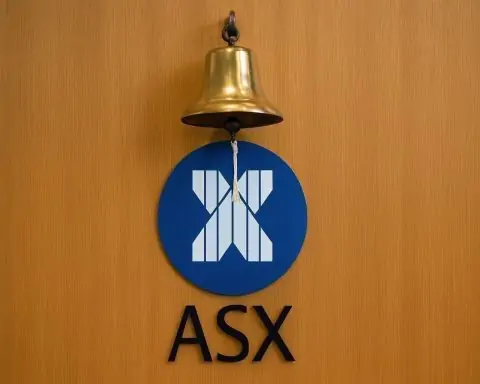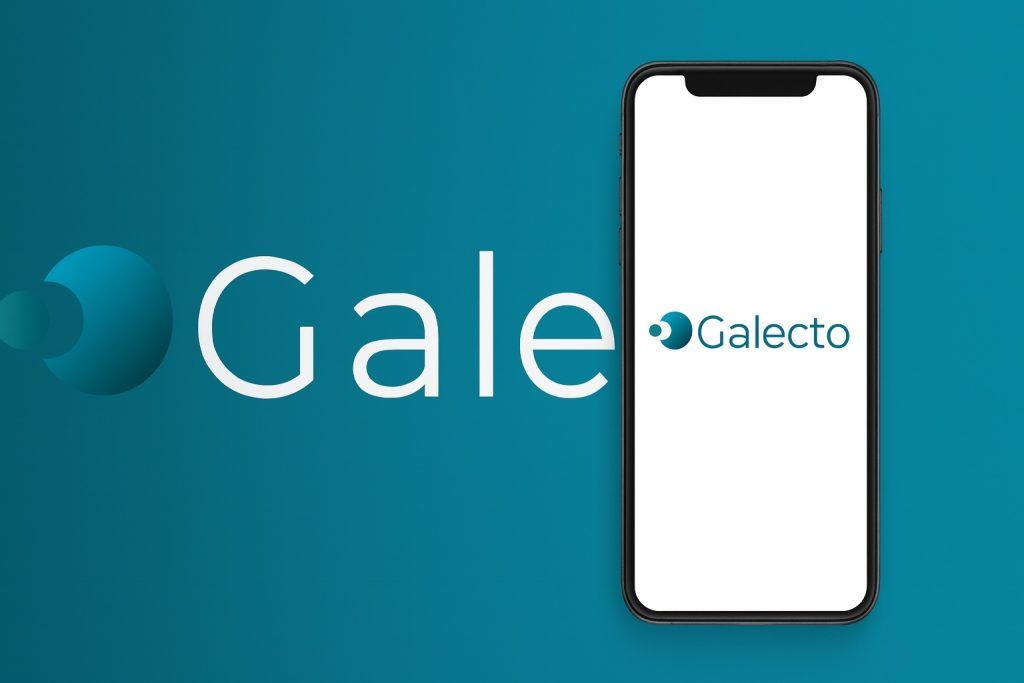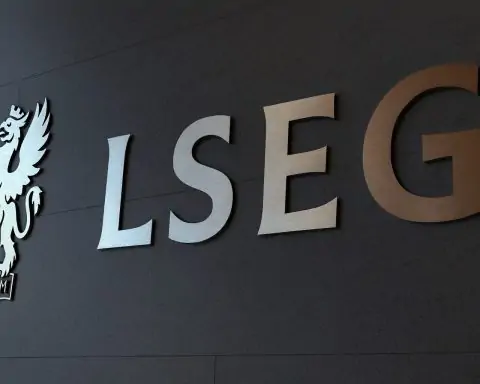- Historic Stock Surge: Spruce Biosciences’ stock exploded over 1,300% in a single day, jumping from under $10 to ~$130 per share after a surprise FDA breakthrough therapy announcement. The micro-cap biotech (Nasdaq: SPRB) saw frenzied trading, multiple volatility halts, and even a further 90% spike pre-market the next day.
- Breakthrough Therapy News: On Oct 6, the FDA granted Breakthrough Therapy Designation (BTD) to Spruce’s lead drug tralesinidase alfa (TA-ERT) for Sanfilippo Syndrome Type B, a rare neurodegenerative disease. This coveted status – backed by data showing a key disease biomarker normalized in treated patients – could accelerate the drug’s path to approval. Spruce is now racing to file a Biologics License Application (BLA) by Q1 2026.
- Investor Frenzy & ‘Pharma Bro’ Endorsement: The massive rally was amplified by social media buzz. Controversial investor Martin Shkreli revealed a long position and boldly predicted Spruce’s drug “will be approved” and become “the new standard of care,” even forecasting SPRB could hit $500 (with no timeline). His commentary on X (Twitter) helped send SPRB trending across trading forums, adding meme-stock style momentum to Tuesday’s pre-market jump.
- From Penny Stock to Nasdaq – A Comeback Story: Just weeks ago, Spruce regained its Nasdaq listing after being delisted to OTC markets in April 2025 for trading under $1. The company executed a 1-for-75 reverse stock split in August to boost its share price, and resumed Nasdaq trading on Sept 15. Post-split, the float was tiny (under 1 million shares), setting the stage for extreme volatility when big news hit. Monday’s surge took shares from a ~$8.82 close last week (market cap ~$5M) to over $130 (market cap ~$70–$80M) virtually overnight.
- Pipeline Pivot and Trial Updates: Spruce’s focus in 2025 pivoted entirely to TA-ERT after its previous lead drug tildacerfont (for congenital adrenal hyperplasia) failed to meet expectations in late 2024. In April 2025, Spruce acquired TA-ERT from BioMarin, targeting the ultra-rare Sanfilippo disease. TA-ERT holds Fast Track, Orphan Drug, and Rare Pediatric Disease designations in the US/EU [1], setting up possible priority review and even a valuable priority review voucher if approved. (Notably, Spruce is still exploring tildacerfont in a new Phase 2 use for depression via a partner, hinting at residual pipeline value.)
- Financial Strains Amid the Hype: Despite the stock euphoria, Spruce remains a tiny, cash-strapped biotech. As of mid-2025 it had only ~$16.4 million in cash on hand – enough to fund operations into late 2025. Aggressive cost cuts (including a 55% workforce reduction) trimmed its quarterly burn to ~$2M, but the company will likely need fresh funding within months. It has essentially no revenue (~$1.3M total over the past 3 years) and continues to post losses (Q2 2025 net loss was $2.1M). Key financial metrics underscore distress: operating margins around –3900% and an Altman Z-score of –23 (deep in the bankruptcy risk zone). The recent rally offers a lifeline – management may seize this chance to raise capital at a higher stock price.
- Analyst Caution & Wild Forecasts: Wall Street remains highly skeptical of SPRB even after the breakthrough. Prior to this week, no analysts rated it a Buy – consensus was Hold with a median target of ~$1 (pre-reverse-split). TipRanks reports that the lone recent analyst rating is Hold with a $10 price target, implying ~92% downside from the post-spike price. In other words, the stock has far outrun traditional valuation models. Bulls argue that TA-ERT’s potential market and a likely Priority Review Voucher (which could be sold for ~$100M+) justify a higher valuation, but bears note Spruce’s need for dilution and unproven commercial capability. This tug-of-war foreshadows continued volatility ahead.
- Peer Context – Biotech Boom or Bubble?: Spruce’s meteoric rise is an outlier, but it reflects a broader trend of speculative surges in small-cap biotech. In early October alone, Galecto (GLTO), another tiny biotech, saw its stock spike over 600% in one day on positive drug news. Such moves highlight both the enormous upside biotech breakthroughs can unlock and the risk of rapid reversals. Many micro-cap biotechs trade at depressed levels after a years-long bear market in the sector, so any hint of clinical or regulatory success can trigger explosive short-term rallies as traders pile in. Seasoned analysts warn that these jumps are often short-lived – companies frequently capitalize by issuing new shares, and initial excitement can cool once the realities of trials, approvals, and commercialization set in.
Stock Performance & Financial Metrics (as of Oct 7, 2025)
Spruce Biosciences’ stock chart for 2025 looks like a hockey stick – mostly flat/down all year and then vertical in October. On Monday, Oct 6, SPRB opened around $8.60 and skyrocketed to $130.40 by the close (+1,378%) after the FDA news. The 52-week high was shattered in the process (previously the stock had been languishing below $2 pre-split, equivalent to <$150 post-split). Volume surged into the tens of millions of shares, far exceeding the tiny float, as investors clamored for a piece of the action. The rally continued after hours (SPRB hit ~$175 in post-market trading Monday), and in pre-market trading Tuesday (Oct 7) shares jumped almost another 90% at one point.
By mid-day Oct 7, the stock was experiencing extreme volatility. SPRB oscillated wildly as day traders took profits and new buyers jumped in, with multiple trading halts reported on the way up and down. Even after pulling back from its peak, the stock was up dramatically week-to-date – a startling reversal for a company that, days prior, had a market capitalization under $5 million. At ~$130 per share, Spruce’s market cap is now in the ~$70–$80 million range – still a nano-cap by biotech standards, but an order of magnitude higher than before the news.
From a valuation standpoint, traditional metrics flash red due to Spruce’s tiny fundamentals. With essentially zero revenue, the stock’s price-to-sales (P/S) ratio has ballooned above 200 [2]. Earnings per share are deeply negative (around –$86) given the company’s cumulative losses and recent share count adjustments. There is no meaningful P/E ratio since Spruce has no profits (and won’t unless its drug reaches market). The price-to-book ratio around ~5.8 is less alarming [3], but that book value doesn’t account for the likely cash infusion Spruce needs. In short, at $100+ per share, SPRB trades on pure future expectations – investors are valuing the promise of its drug pipeline, not current finances.
According to Yahoo Finance data, Spruce’s 52-week range spans from mere pennies (adjusted for the reverse split) up to this week’s triple-digit high. The stock is up ~95% year-to-date as of Oct 6 – an astonishing figure only because the year began with shares already beaten down. The beta is extremely high (3.4) [4], signifying much greater volatility than the average market stock. All these figures underscore that SPRB is a high-risk, high-reward outlier: its valuation is untethered from fundamentals, swinging instead on news flow and trader sentiment.
FDA Breakthrough Designation & Pipeline Updates
The catalyst for SPRB’s explosion was news on October 6, 2025 that the FDA granted Breakthrough Therapy Designation to its drug tralesinidase alfa (TA-ERT). TA-ERT is an enzyme replacement therapy for Sanfilippo Syndrome Type B (MPS IIIB), an ultra-rare and fatal pediatric neurodegenerative disorder. This disease (also known as mucopolysaccharidosis IIIB) has no approved treatments – children born with it experience progressive brain damage and typically die in their teenage years. TA-ERT aims to replace the missing enzyme (NAGLU) and clear the toxic metabolites causing neurodegeneration.
Breakthrough Therapy Designation (BTD) is a big deal in biotech: it’s reserved for experimental treatments that show preliminary clinical evidence of substantial improvement over existing options for serious diseases. For Spruce, the FDA’s BTD decision was supported by long-term clinical data indicating that TA-ERT normalized levels of heparan sulfate (HS-NRE) in the cerebrospinal fluid of treated children. This biomarker is believed to be the key driver of brain damage in Sanfilippo B. In fact, the FDA went so far as to confirm that HS-NRE normalization is “reasonably likely to predict clinical benefit” – meaning Spruce can use this biomarker as a surrogate endpoint for approval. This is crucial: it opens the door to accelerated approval of TA-ERT, potentially without waiting for lengthy clinical outcomes. Essentially, if the drug consistently normalizes HS levels (and shows signs of stabilizing the patients’ condition), that might be enough for approval given the disease’s severity and lack of alternatives.
With BTD in hand, Spruce gains enhanced access to the FDA, including senior regulators’ guidance, “rolling” review of its application, and eligibility for priority (speedy) review. The company wasted no time announcing it remains on track to submit a Biologics License Application (BLA) in Q1 2026 for TA-ERT. If that timeline holds, the drug could potentially be approved as early as late 2026. Importantly, Spruce would also qualify for a Rare Pediatric Disease Priority Review Voucher upon approval, thanks to TA-ERT’s Orphan Drug and Rare Pediatric Disease designations [5]. Such vouchers are highly coveted – they can be sold to other pharma companies, often fetching ~$100 million, providing a non-dilutive cash boost.
TA-ERT’s breakthrough designation comes on the heels of a strategic pivot by Spruce Biosciences. Up until 2024, Spruce’s lead program was tildacerfont, a drug for congenital adrenal hyperplasia (CAH). However, in late 2024 tildacerfont’s Phase 2 trials delivered disappointing results, failing to meet key efficacy endpoints. That setback, combined with a brutal biotech bear market, crushed Spruce’s stock (contributing to its Nasdaq delisting). In early 2025, the company dramatically refocused its pipeline. In April 2025, Spruce acquired tralesinidase alfa (TA-ERT) from BioMarin Pharmaceutical and made this ultra-rare disease therapy its top priority. The rationale: while Sanfilippo B has a tiny patient population, the unmet need is huge (the first disease-modifying treatment could command significant pricing and face little competition). Spruce also likely got a favorable deal from BioMarin, which had advanced TA-ERT through some clinical studies already.
The company’s pipeline today is essentially built around TA-ERT. Spruce is conducting extension studies to gather more data in Sanfilippo patients and preparing for commercialization strategies given the small, concentrated patient pool. Beyond that, Spruce has one foot in its legacy program – it hasn’t completely abandoned tildacerfont. In fact, Spruce partnered with HMNC Brain Health to test tildacerfont in a subset of Major Depressive Disorder (MDD) patients, exploring whether modulating the CRF (corticotropin-releasing factor) pathway can help depression. This is a high-risk, speculative angle, but if successful it could breathe new life into tildacerfont under a different indication (and with partner funding). Nonetheless, investors clearly view Spruce now as a one-drug story, and that drug is TA-ERT.
Latest News & Market Catalysts (Oct 6–7, 2025)
The week of Oct 6, 2025 has been a whirlwind for Spruce Biosciences. It began Monday pre-market with the press release (via Business Wire) announcing the FDA’s Breakthrough Therapy Designation for TA-ERT. Initially, the stock jumped in pre-market trading – one report noted SPRB nearly doubled before the open on the news. Once the regular session began, momentum took over. With a float of only ~0.5 million shares post-reverse-split, buy orders overwhelmed supply, and the price went into overdrive. SPRB kept hitting circuit breakers (volatility trading halts) as it surged triple digits in percentage, then quadruple digits. By early afternoon Monday, the stock was up well over 1,000% – Seeking Alpha noted a 1,244% jump to about $118 by 3pm with several halts along the way. The frenzy culminated in a 1,378% gain by the closing bell – turning a $10,000 investment in SPRB on Friday into $147,800 by Monday’s close, a staggering overnight windfall for anyone lucky (or clairvoyant) enough to hold shares.
After hours on Monday, the chaos only grew: speculators continued to chase the stock, which spiked another ~30% beyond the close (hitting ~$175). This kind of move is virtually unheard of for a listed stock – SPRB became the day’s top gainer on Wall Street by a huge margin. Finance Twitter and Stocktwits forums lit up with chatter about Spruce, with many comparing it to meme stock-style squeezes. However, unlike GameStop or AMC, Spruce didn’t have a large short interest driving a squeeze – this was more of a momentum melt-up combined with perhaps some shorts caught off guard (if any were left in this tiny name).
Early Tuesday, Oct 7, a new wrinkle added fuel: Martin Shkreli, the infamous ex-hedge fund manager known as “Pharma Bro,” publicly announced he had gone long SPRB and was extremely bullish on TA-ERT. In an early-morning X (Twitter) post, Shkreli – who has a following in biotech circles – proclaimed Spruce’s enzyme therapy likely “will be approved” and could become the “new standard of care” for Sanfilippo B, even speculating that SPRB shares could reach $500 eventually. He provided a scientific rationale, noting the drug’s ability to normalize a metabolite that would otherwise be lethal by young adulthood. While Shkreli’s optimistic prediction lacks a timeline (and his market commentary is controversial given his past fraud conviction), it undeniably fanned the flames of investor excitement. By 5 AM ET Tuesday, SPRB was again soaring – up over 90% in pre-market trading on heavy volume, topping the day’s trending tickers.
Once Tuesday’s regular session opened, SPRB shares seesawed as day traders and momentum funds battled. Some early buyers tried to push the stock higher on the Shkreli catalyst, while others who got in at much lower levels on Monday likely sold to lock in profits. The stock’s intraday range was enormous (with indications it traded anywhere from around $100 up toward $200 in the first hours). Brokers issued volatility warnings and the Nasdaq continued to halt SPRB periodically to cool off trading. By midday, the stock was off its pre-market highs but still extremely elevated relative to two days prior. Financial media outlets continued to pump out stories on Spruce’s wild ride, and SPRB remained the number-one topic on biotech trading forums.
Meanwhile, Spruce’s management has been relatively quiet beyond the initial press release and a comment from CEO Javier Szwarcberg, M.D., M.P.H. in that release. “We are pleased to receive U.S. FDA Breakthrough Therapy Designation as we prepare to submit the BLA of TA-ERT…in the first quarter of 2026. This designation highlights TA-ERT’s potentially transformative clinical impact as the first disease-modifying therapy to treat MPS IIIB,” Szwarcberg said. He emphasized the “rapid, profound, and durable effect” TA-ERT has demonstrated on the key biomarker and the stabilization of cognitive function in treated children. In other words, the company itself is focusing on the long-term vision – getting the drug approved and to patients – while the market speculates frantically in the short term. There’s been no word (yet) of any financing or secondary offering, but observers widely expect Spruce to raise money soon (either by selling new shares or perhaps striking a licensing deal) to capitalize on this surge. History in biotech shows that when a micro-cap stock jumps on clinical news, companies often issue stock quickly to extend their cash runway.
Financial Health Check: Cash, Burn Rate & Balance Sheet
Underneath the market fireworks, Spruce Biosciences’ financial statements tell a story of a company on the edge – typical for a pre-revenue biotech. According to Spruce’s latest filings (Q2 2025), the company had about $16.4 million in cash as of June 30, 2025. It had no significant income (total revenue of roughly $1.3 million aggregated over the past three years), which likely came from licensing or collaboration milestones rather than product sales. In other words, Spruce currently has zero products on the market generating revenue. All operations are funded by investor capital.
On the expense side, Spruce dramatically slashed its burn rate earlier in 2025 to avoid running out of cash. In April, management cut 55% of the workforce and pruned R&D and G&A costs. This brought the quarterly net loss down to about $2.1 million in Q2 2025, a sharp improvement from the $9.2 million loss in Q2 2024. With the leaner operations, Spruce estimated that its existing cash could support operations through late 2025 – barely enough to reach the planned BLA filing in early 2026. Thus, absent new funding, the company would face a cash crunch just as it’s seeking approval for TA-ERT.
Spruce’s balance sheet is otherwise not encumbered by debt – debt-to-equity was a low ~0.14, meaning the company hasn’t borrowed much (a positive in that it doesn’t owe creditors, though it also can’t leverage debt financing easily). Liquidity ratios were healthy (current ratio and quick ratio both ~2.6), indicating short-term assets well above liabilities – a standard situation after equity financings. However, these metrics don’t reflect the recent surge; if Spruce raises equity now at a high stock price, its balance sheet could improve significantly (cash in, extended runway). The pressing issue is when and how they raise money: doing so quickly could stabilize the company’s finances but might prick the stock’s speculative bubble (as new shares dilute existing holders).
In terms of ongoing costs, Spruce will need to invest in manufacturing, regulatory filings, and potentially commercialization prep for TA-ERT. Even though the target patient population is small, launching a drug (especially for an ultra-rare disease) is expensive and complex. Spruce might seek a partner or buyer for TA-ERT to handle marketing, which could bring in upfront cash. If it goes alone, it will certainly need to raise a substantial sum for launch activities.
Various financial health indicators compiled by GuruFocus illustrate Spruce’s precarious state prior to this rally. The company’s Altman Z-Score (a formula that predicts bankruptcy risk) stood around –23, which is far below the “distress” threshold of 1.8 – essentially signaling that, on paper, Spruce was heading toward insolvency without intervention. Its Piotroski F-Score (a measure of operational strength) was just 1/9, reflecting weak profitability and efficiency metrics. These numbers are not surprising for a clinical-stage biotech with one failed program and one nascent program, but they underscore why Spruce’s stock was languishing at penny-stock levels before the breakthrough news. Investors were pricing in a high chance that Spruce might never get to market or could run out of cash.
Now, with a potential game-changing drug in hand and a sudden stock windfall, Spruce has a chance to rewrite its financial story. If TA-ERT truly is on a fast track to approval and if the market for it is lucrative (despite being small, rare disease drugs often command $300k+ per patient annually), Spruce’s future cash flows could improve dramatically in a few years. But to survive until then, the company will almost certainly need to dilute shareholders in the near term. The key will be balancing that necessity against the current exuberant sentiment – a well-timed secondary offering could bring in much-needed cash without derailing the stock if investors remain optimistic about the drug’s prospects.
Analyst Commentary & Stock Forecasts
Wall Street analysts were caught off guard by Spruce’s sudden resurgence. The stock had minimal coverage, and those who did follow it had very low expectations. Going into this week, Spruce carried a consensus rating of “Hold”, with 0 Buy ratings, 4 Hold, 0 Sell – essentially a vote of no-confidence from analysts. Price targets were almost comically low: the median target was about $1.00 (pre-reverse-split). Adjusted for the 1:75 split, that’s roughly $75 per share – a target that Spruce not only met but blew past on Monday. In other words, the stock in one day shot well beyond what any analyst thought it was worth in the next 12 months.
As of Oct 7, no major Wall Street firms have formally updated their ratings or targets (the news is still fresh). According to TipRanks, the only recent analyst rating on SPRB is a Hold with a $10 price target. This appears to be an update from one analyst factoring in the new share count or the breakthrough news in a cursory way. A $10 target is over 90% below the current trading price – effectively saying the stock is wildly overpriced relative to the firm’s valuation models. That huge disconnect highlights a key point: analysts value Spruce on fundamentals (clinical probability of success, estimated patient population, potential sales, etc.), which yield a modest valuation, whereas the market is temporarily valuing it on hype and momentum. We can expect in the coming days/weeks that some biotech analysts will revise their models for Spruce, but unless they assume near-certain approval and very high pricing, their targets are likely to remain far below the current market price.
Some independent and retail analysts (bloggers, small research shops) have started weighing in. A few note that if TA-ERT is approved and captures the majority of Sanfilippo B patients globally, annual revenues could reach into the low hundreds of millions of dollars – which might, in a rosy scenario, justify a market cap in the few-hundred-million range. But even that optimistic fundamental case is still much lower than the ~$100M+ valuation the market gave Spruce this week. The difference is partly due to timelines and risk: approval is not guaranteed (BTD is encouraging but the FDA will still scrutinize safety/efficacy), and even if approved, commercialization in ultra-rare diseases can be challenging (identifying patients, securing reimbursement, etc.). Spruce also faces competition in the broader gene therapy space – for instance, other companies are working on gene therapies for Sanfilippo syndromes (though not necessarily Type B specifically). If a one-time gene therapy could cure the disease, it might limit the uptake of an enzyme replacement like TA-ERT in the long run.
Public sentiment, however, is currently in the driver’s seat for SPRB stock. On forums like Stocktwits and Reddit’s biotech threads, traders are sharing memes about Spruce’s moonshot and debating if it’s “the next big runner” or a bubble about to burst. The infusion of Martin Shkreli’s commentary adds an unusual twist – Shkreli, despite his tarnished reputation, is a trained pharma analyst and his bullish stance (calling SPRB a multi-bagger that could go to $500) has drawn in some speculative buyers who don’t want to miss “the next Moderna” (an over-the-top comparison floating around social media). Other investors are more wary, with some openly saying they’re in SPRB only for a short-term trade, not a long-term investment, given the clear need for dilution and execution risk ahead.
Market forecasting tools and technical analysts also jumped into the fray. Some algorithmic forecasts (on sites like Coincodex and StockInvest) predict SPRB will fall back sharply in coming weeks – for example, one model projects shares could drift back below $10 by the end of October, basically expecting the hype to retrace completely. These models often assume mean-reversion after an overshoot. On the other hand, momentum traders point out that stocks which make such outsized moves can sometimes “range high” for an extended period, especially if the float remains low and shorts are hesitant to step in.
The broader biotech market context is also worth noting when forecasting SPRB’s trajectory. 2022–2024 were brutal for small-cap biotechs, with many down 80–90%, so valuations became extreme. In late 2024 and 2025, there have been signs of life in the sector: big pharma M&A picked up and certain biotech indices have stabilized. Still, investor appetite for risk remains selective. When a stock like Spruce suddenly offers a tantalizing success story (small company, huge one-day gain, FDA blessing in hand), it attracts those looking for the next homerun. But history reminds us that for every 10 micro-biotechs that spike on news, maybe 1 or 2 sustain any long-term gains – the rest often fade as reality sets in.
For now, analysts advise caution. “Overall, the stock’s performance will remain closely tied to clinical results and regulatory developments, making it a high-risk, high-reward opportunity,” wrote one commentator, stressing the binary nature of Spruce’s fortunes. In essence, Spruce Biosciences has transformed from a near-obscurity into a market sensation overnight, but the company’s ultimate value will hinge on turning the promise of TA-ERT into an approved, deliverable therapy. Until more clarity emerges on that front (e.g. FDA feedback, final trial data, partnership deals), forecasts for SPRB stock will be all over the map. Investors should be prepared for a bumpy ride, as the same leverage that drove shares up could work in reverse if enthusiasm falters.
Outlook: Will SPRB’s Rally Last, and What’s Next?
With Spruce Biosciences now in the spotlight, the big question is: what comes next? In the near term, a few scenarios could play out:
- Equity Raise or Partnership: Most experts expect Spruce to capitalize on the high share price by securing additional funding. A common move would be a secondary stock offering (selling new shares to institutional investors or via an ATM program). Given the tiny float, even a relatively small offering (say, $20–30 million worth of shares) could significantly extend Spruce’s runway into 2026 – but it would also increase the share count. The market’s reaction to such an offering will be telling: a well-received raise could stabilize the stock around new levels, while an overly dilutive one could trigger a pullback. Alternatively, Spruce might announce a strategic partnership – for example, licensing ex-US rights to TA-ERT to a larger pharma in exchange for upfront cash. That kind of news could be interpreted bullishly (validation by a big player) or bearishly (giving up future upside), depending on terms.
- Regulatory Progress: On the fundamentals side, the next major milestone is likely filing the BLA in Q1 2026 and any updates from the FDA meetings in the interim. Investors will closely watch if Spruce provides additional clinical data at a medical conference or via publication – especially any evidence that TA-ERT is affecting clinical outcomes (cognitive or motor function) in children, not just biomarkers. Positive data reinforcing the drug’s impact could support the stock; conversely, if any safety concerns or less impressive results emerge, it could deflate some optimism. The breakthrough designation implies the FDA is engaged with Spruce, so news of FDA feedback or grant of Priority Review in 2026 would be catalysts as well.
- Market Dynamics: In the broader market, SPRB’s wild swing may attract both momentum traders and short-sellers. As of now, short interest in SPRB has been low (the stock was too illiquid and cheap to borrow historically), but at $100+ and with massive volume, we may see shorts start to take positions betting that the stock will fall back to a level more justified by fundamentals. If short interest rises, that introduces the possibility of continued volatility – potentially another short squeeze if any new positive news hits, or a grinding down of the price if no news comes and initial buyers lose interest. The stock’s behavior will likely be very news-dependent; absent news, profit-taking could dominate.
- Comparison to Peers: Looking at peers, explosive moves in biotech often retrace significantly. For example, Galecto (GLTO) — which spiked 600%+ in early October on a clinical update — gave back a chunk of those gains within days as traders moved on. Many in the investor community are aware of this pattern and will be gauging when Spruce’s story transitions from hype to needing real progress. However, Spruce’s case has a bit more substance than some one-day wonders: an FDA BTD is a concrete positive development (not just a speculative rumor or phase 1 data). This could keep some fundamental-driven investors interested for a longer period, especially if they see a reasonable chance of approval and want to be positioned for that outcome.
In summary, Spruce Biosciences (SPRB) has pulled off a stunning turnaround in market fortune within a matter of days. The stock’s 1,300%+ eruption following its FDA breakthrough news underscores both the immense potential value of its drug for a devastating rare disease and the frenzied speculative environment in biotech micro-caps. Spruce now stands at a crossroads: can it deliver on the promise that investors are suddenly betting on? The company’s ability to navigate the next 12–18 months – securing funding, satisfying the FDA, preparing for a niche drug launch – will determine if SPRB’s current valuation is justified or if this episode becomes a cautionary tale.
For public and prospective investors, the saga of Spruce is equal parts inspiring and cautionary. It highlights how quickly fortunes can change in biotech – a single positive development can revive a company on the brink. Yet it also reminds that such parabolic stock moves are rarely stable. Spruce has bought itself a new lease on life (and then some), but now the hard work begins: turning a scientific breakthrough into a sustainable business. In the coming weeks, expect continued headlines as Wall Street digests this story – from expert analyses debating the likelihood of TA-ERT’s success, to possibly insider transactions (will any insiders sell into this rally or conversely buy more?), to any moves by Spruce’s board to maximize shareholder value (the company could even become a takeover target given its low float and coveted asset, though any acquirer would carefully assess the data first).
For now, Spruce Biosciences’ tale is one of high hopes and high stakes. The stock’s current altitude reflects a collective bet on a medical breakthrough. Whether SPRB continues to defy gravity will hinge on execution and evidence in the coming months. As the dust settles from this week’s frenzy, investors should keep a close eye on Spruce’s next steps – because the journey from lab to market is just entering its most critical phase.
Sources: Yahoo Finance; Spruce Biosciences press release (Business Wire via BioSpace); Stocktwits News; TipRanks; ts2.tech (Tech Space 2.0); GuruFocus; and other financial media reporting (Seeking Alpha, Benzinga, Investing.com).
References
1. ts2.tech, 2. www.gurufocus.com, 3. www.gurufocus.com, 4. www.gurufocus.com, 5. ts2.tech
